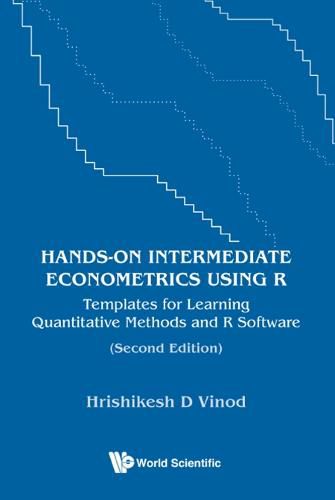Readings Newsletter
Become a Readings Member to make your shopping experience even easier.
Sign in or sign up for free!
You’re not far away from qualifying for FREE standard shipping within Australia
You’ve qualified for FREE standard shipping within Australia
The cart is loading…






This title is printed to order. This book may have been self-published. If so, we cannot guarantee the quality of the content. In the main most books will have gone through the editing process however some may not. We therefore suggest that you be aware of this before ordering this book. If in doubt check either the author or publisher’s details as we are unable to accept any returns unless they are faulty. Please contact us if you have any questions.
How to learn both applied statistics (econometrics) and free, open-source software R? This book allows students to have a sense of accomplishment by copying and pasting many hands-on templates provided here.The textbook is essential for anyone wishing to have a practical understanding of an extensive range of topics in Econometrics. No other text provides software snippets to learn so many new statistical tools with hands-on examples. The explicit knowledge of inputs and outputs of each new method allows the student to know which algorithm is worth studying. The book offers sufficient theoretical and algorithmic details about a vast range of statistical techniques.The second edition’s preface lists the following topics generally absent in other textbooks. (i) Iteratively reweighted least squares, (ii) Pillar charts to represent 3D data. (iii) Stochastic frontier analysis (SFA) (iv) model selection with Mallows’ Cp criterion. (v) Hodrick-Prescott (HP) filter. (vi) Automatic ARIMA models. (vi) Nonlinear Granger-causality using kernel regressions and bootstrap confidence intervals. (vii) new Keynesian Phillips curve (NKPC). (viii) Market-neutral pairs trading using two cointegrated stocks. (ix) Artificial neural network (ANN) for product-specific forecasting. (x) Vector AR and VARMA models. (xi) New tools for diagnosing the endogeneity problem. (xii) The elegant set-up of k-class estimators and identification. (xiii) Probit-logit models and Heckman selection bias correction. (xiv) Receiver operating characteristic (ROC) curves and areas under them. (xv) Confusion matrix. (xvi) Quantile regression (xvii) Elastic net estimator. (xviii) generalized Correlations (xix) maximum entropy bootstrap for time series. (xx) Convergence concepts quantified. (xxi) Generalized partial correlation coefficients (xxii) Panel data and duration (survival) models.
$9.00 standard shipping within Australia
FREE standard shipping within Australia for orders over $100.00
Express & International shipping calculated at checkout
This title is printed to order. This book may have been self-published. If so, we cannot guarantee the quality of the content. In the main most books will have gone through the editing process however some may not. We therefore suggest that you be aware of this before ordering this book. If in doubt check either the author or publisher’s details as we are unable to accept any returns unless they are faulty. Please contact us if you have any questions.
How to learn both applied statistics (econometrics) and free, open-source software R? This book allows students to have a sense of accomplishment by copying and pasting many hands-on templates provided here.The textbook is essential for anyone wishing to have a practical understanding of an extensive range of topics in Econometrics. No other text provides software snippets to learn so many new statistical tools with hands-on examples. The explicit knowledge of inputs and outputs of each new method allows the student to know which algorithm is worth studying. The book offers sufficient theoretical and algorithmic details about a vast range of statistical techniques.The second edition’s preface lists the following topics generally absent in other textbooks. (i) Iteratively reweighted least squares, (ii) Pillar charts to represent 3D data. (iii) Stochastic frontier analysis (SFA) (iv) model selection with Mallows’ Cp criterion. (v) Hodrick-Prescott (HP) filter. (vi) Automatic ARIMA models. (vi) Nonlinear Granger-causality using kernel regressions and bootstrap confidence intervals. (vii) new Keynesian Phillips curve (NKPC). (viii) Market-neutral pairs trading using two cointegrated stocks. (ix) Artificial neural network (ANN) for product-specific forecasting. (x) Vector AR and VARMA models. (xi) New tools for diagnosing the endogeneity problem. (xii) The elegant set-up of k-class estimators and identification. (xiii) Probit-logit models and Heckman selection bias correction. (xiv) Receiver operating characteristic (ROC) curves and areas under them. (xv) Confusion matrix. (xvi) Quantile regression (xvii) Elastic net estimator. (xviii) generalized Correlations (xix) maximum entropy bootstrap for time series. (xx) Convergence concepts quantified. (xxi) Generalized partial correlation coefficients (xxii) Panel data and duration (survival) models.